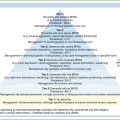Chapter 29 PSYCHOTHERAPEUTIC TREATMENT
INTRODUCTION
This chapter provides information on what is known about the commonly used strategies for psychotherapeutic treatment for older people. Some of the symptoms of the mental disorders that affect older people, such as thoughts of hopelessness and negativity, the inability to enjoy pleasurable activities, anxiety and low energy levels, can be addressed with psychotherapeutic treatments alone. However, when other symptoms such as psychotic or suicidal thoughts, appetite and sleep disturbances are evident, a combination of psychotherapeutic and pharmacological treatments may be the best course of action. Psychotherapeutic treatments are important adjunctive therapies for older people, particularly when they are required to take many medications for serious medical conditions.
SPECIAL ISSUES CONCERNING OLDER PEOPLE
When entering a therapeutic relationship with an older person, it pays to be mindful of some characteristics the older person may bring into the relationship (see also Ch 11). With the ageing process comes more physical and perhaps cognitive problems against a backdrop of vast and different life experiences. Even with a lifetime of knowledge and experience, some older people just accept whatever therapy is offered or directed at them without a thorough understanding or enthusiasm for that option. A more prudent strategy to improve engagement and hopefully achieve success with the therapy would be to present all options, including information about the pace, format and purpose, allowing the person to choose and give support for that choice. If the person has had therapy previously, it would be worthwhile to revisit any successful approaches, but older people are quite capable of learning new approaches.
Working with older people requires knowledge of what has defined their generation (e.g. wars, economic crises, dominant religions and social practices). Many older Australians experienced as children the effects of the 1930s depression and World War II, and as adults the effects of the Vietnam War and major technological advances. Social practices and beliefs of always being stoic and that personal problems or mental illness are signs of weakness and failure pervade this generation. Personal problems are often not discussed at all, or only within the family, and certainly not with strangers or therapists whose intentions may be deemed akin to brainwashing. Ageist attitudes dictate that it is normal for older people to be unhappy, cranky and inflexible to change. Normal boundaries (see Ch 11) that are set up with younger clients in regard to such issues as physical contact and acceptance of gifts may have to be rethought with some older clients (e.g. when expressing gratitude, the older person may find it insulting if you do not accept an embrace or an offer of a cup of tea). In rural areas, the mental health workers often leave older people’s houses with plant cuttings and bottles of homemade condiments. So it is a good idea to have a formal policy in place on how to deal with such circumstances.
Psychotherapeutic treatments can be delivered via individual or group formats. The group format may be more economical and is particularly useful for older people who have a limited social network. In a review conducted by Pinquart et al (2007), the individual format came out slightly ahead of the group format, with it being more efficacious and experiencing less dropout rates.
COGNITIVE BEHAVIOUR THERAPY
Cognitive behaviour therapy (CBT) has been shown to be successful in treating a wide variety of disorders that affect older people, such as depression, anxiety, panic attacks and sleep disturbance (Hill & Brettle 2006, Knight 2004, Laidlaw et al 2003, Pinquart et al 2007, Wilson et al 2009). The basic premise of CBT is determining how the older person perceives themselves and how they judge the effect certain experiences have had on their lives. The CBT therapist questions and challenges strongly held beliefs that may be reinforcing negative self-concepts. Through the therapeutic process, the older person is made aware of how they distort and misinterpret certain events in their lives, and then positive thoughts and behaviours are activated by altering these erroneous thought patterns. The therapy is usually time limited to 10 or so sessions. CBT is effective in the acute phase of treatment and also in the longer term by helping reduce the risk of recurrence. The usual protocols for CBT are behavioural strategies drawn from Lewinsohn’s (1974) operant model and cognitive strategies from Beck et al’s (1979) cognitive model.
With CBT, erroneous thoughts are challenged and the older person is taught how to reframe these thoughts as hypotheses so that their thinking processes are trained to be more rational. This is done by identifying the troubling thought, assembling the evidence that supports and does not support this thought, using skills to challenge the erroneous thoughts and developing alternative ways of thinking. Examples of questions would be: ‘How do you know that your family thinks you are a burden?’ and ‘Does a person’s age mean they have to behave in a certain manner?’ The responses to the reframed questions can then be converted into simple, coping statements that are reflective of a more realistic situation, such as: ‘My family is an important part of my support network. I do not know if I am a burden to them.’ Realistic statements help to reduce anxious or depressive feelings. Brief, affirmative statements can be used by the person when they feel the onset of anxious or depressive feelings.
SOME OF THE FEATURES OF COGNITIVE BEHAVIOUR THERAPY
Features of cognitive behaviour therapy (CBT) include:
BEHAVIOUR THERAPY
Behaviour therapy (BT) that is suitable for older people includes techniques such as relaxation and exposure therapy, including systematic desensitisation (see Ch 23). It is effective generally with disorders such as depression and anxiety and dealing with specific symptoms such as insomnia (Engels & Vermey 1997).
Stay updated, free articles. Join our Telegram channel

Full access? Get Clinical Tree




